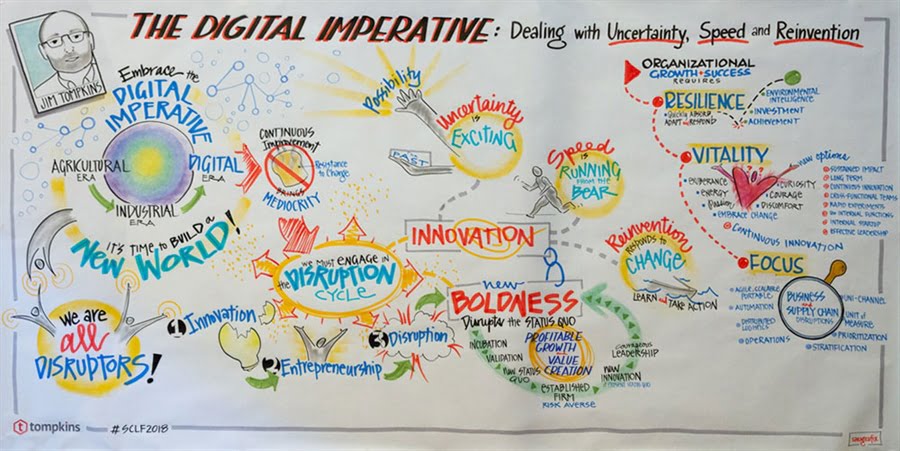Published October 25, 2018
How can companies deal with the pace of disruptions occurring today?
As the pace of disruption has changed in a major way over the last 60 years, therefore too should the approach we use to deal with this change. In the 1960’s the pace of disruption was slow. In fact, so slow you really had to study an industry cycle to “see” it revolving. In 1960 a major disruption occurred every 40 years, but by 1990 a major disruption occurred every 15 years. Today we see major disruptions every year or two. In this 60 year span we have gone from a major disruption once or twice in a career, to today where they are occurring every few years. This is a big deal and requires that we adjust our thinking.
The driver of the increased pace of disruption is the pace of innovation. Companies view disruption and innovation differently. Some companies see the pace of disruption and innovation as their friend and embrace change. Others see the pace of disruption and innovation as an enemy and they resist change. If we had a Hall of Fame for the Friends of Disruption, Jeff Bezos would be enshrined. His, “every day is day one,” quote would be above the door to the Hall of Fame. To the contrary, the resisters, the firms who do not want to “rock the boat” who want to keep doing what they have always done are not invited to even visit the Hall of Fame. The reason they are not invited is not because they are not welcome, rather they have gone out of business. These firms include Toys R Us, RadioShack, Sports Authority, Circuit City, Blockbuster, Borders, and many more.
How can companies deal with the pace of disruption? Become an innovator. Become a disruptor. Embrace digital disruption and establish new business models, new services, and new products. Understand the disruption cycle and establish a plan to reduce friction as you travel around the disruption cycle. Your speed around the disruption cycle must match or exceed your competitors for you to be able to enter the Friends of Disruption Hall of Fame.
More Resources
- Video: Creating Competitive Advantage
- Video: Tompkins Robotics



